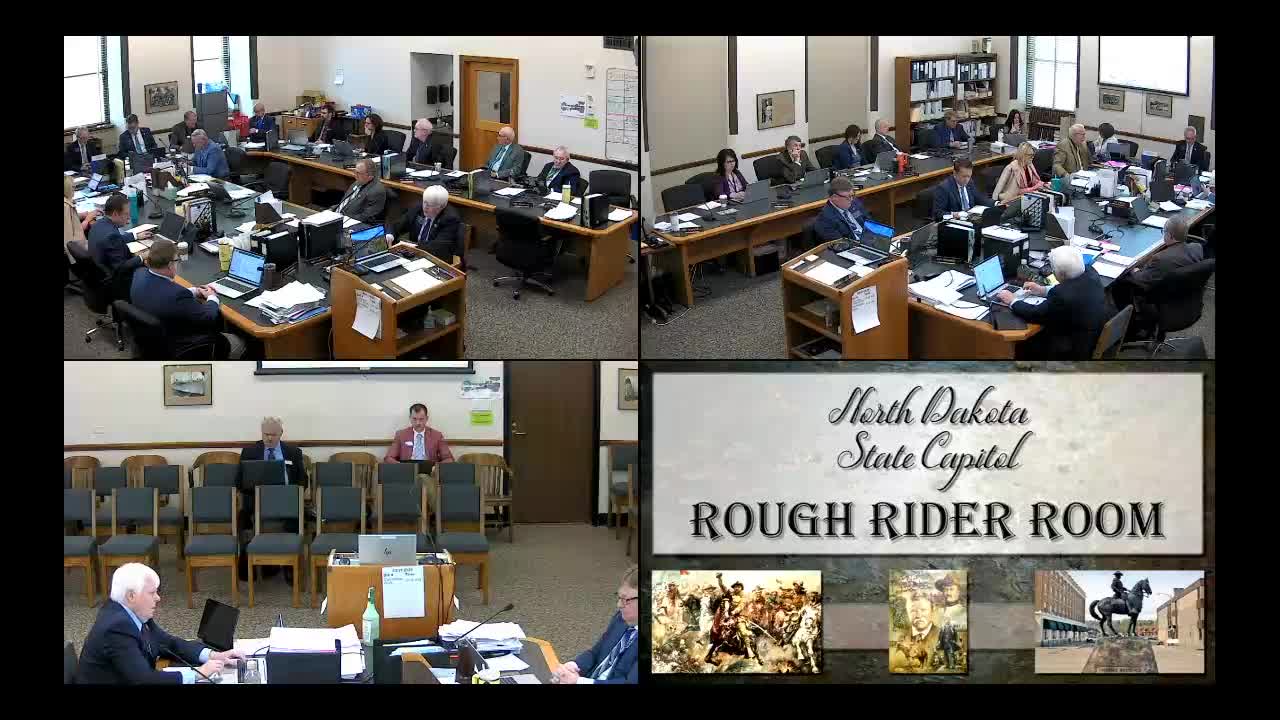Representative Hansen presents budget enhancements for North Dakota's judicial branch
March 31, 2025 | Appropriations, House of Representatives, Legislative, North Dakota
This article was created by AI summarizing key points discussed. AI makes mistakes, so for full details and context, please refer to the video of the full meeting. Please report any errors so we can fix them. Report an error »

In a pivotal meeting held on March 31, 2025, the North Dakota Legislature's House Appropriations Committee delved into the budget for the judicial branch, a topic that holds significant implications for the state's legal system. As the committee gathered, the atmosphere was charged with the urgency of addressing long-standing issues within the judicial framework, particularly concerning funding and personnel.
Representative Hansen opened the discussion by outlining the budget's structure, which is divided into four key sections: the Supreme Court, District Courts, the Judicial Conduct Commission, and a newly established guardianship and conservatorship office. This division reflects a comprehensive approach to addressing the diverse needs of the judicial system across North Dakota.
A central theme emerged during the discussions: the necessity for long-overdue salary increases for judicial branch employees. The last adjustment to the compensation grid for non-judicial staff occurred in 2013, leaving many positions significantly underpaid compared to market standards. The proposed budget aims to rectify this by implementing an 11-step compensation grid, which will enhance salary equity and help attract qualified candidates to judicial roles.
The budget also includes notable salary increases for judges, with Supreme Court justices seeing an 11% raise and the Chief Justice's salary increasing by 12.1%. These adjustments are designed to bring North Dakota's judicial salaries in line with national averages, addressing concerns about the declining interest in judicial positions due to inadequate compensation. By improving salary structures, the state hopes to cultivate a more diverse and capable pool of candidates for these critical roles.
In addition to salary enhancements, the budget allocates funds for operational improvements, including increased IT investments and cloud-based storage solutions. These upgrades are essential for modernizing the judicial system and ensuring it can efficiently handle the demands of contemporary legal proceedings.
As the committee moved through the budget details, it became clear that the proposed changes are not merely financial adjustments; they represent a commitment to strengthening the integrity and functionality of North Dakota's judicial system. With these enhancements, lawmakers aim to foster a more effective judiciary that can better serve the state's residents.
The discussions concluded with a sense of optimism about the future of North Dakota's judicial branch, as the proposed budget seeks to address critical issues that have long hindered its effectiveness. As the legislative process continues, the outcomes of these discussions will undoubtedly shape the landscape of justice in North Dakota for years to come.
Representative Hansen opened the discussion by outlining the budget's structure, which is divided into four key sections: the Supreme Court, District Courts, the Judicial Conduct Commission, and a newly established guardianship and conservatorship office. This division reflects a comprehensive approach to addressing the diverse needs of the judicial system across North Dakota.
A central theme emerged during the discussions: the necessity for long-overdue salary increases for judicial branch employees. The last adjustment to the compensation grid for non-judicial staff occurred in 2013, leaving many positions significantly underpaid compared to market standards. The proposed budget aims to rectify this by implementing an 11-step compensation grid, which will enhance salary equity and help attract qualified candidates to judicial roles.
The budget also includes notable salary increases for judges, with Supreme Court justices seeing an 11% raise and the Chief Justice's salary increasing by 12.1%. These adjustments are designed to bring North Dakota's judicial salaries in line with national averages, addressing concerns about the declining interest in judicial positions due to inadequate compensation. By improving salary structures, the state hopes to cultivate a more diverse and capable pool of candidates for these critical roles.
In addition to salary enhancements, the budget allocates funds for operational improvements, including increased IT investments and cloud-based storage solutions. These upgrades are essential for modernizing the judicial system and ensuring it can efficiently handle the demands of contemporary legal proceedings.
As the committee moved through the budget details, it became clear that the proposed changes are not merely financial adjustments; they represent a commitment to strengthening the integrity and functionality of North Dakota's judicial system. With these enhancements, lawmakers aim to foster a more effective judiciary that can better serve the state's residents.
The discussions concluded with a sense of optimism about the future of North Dakota's judicial branch, as the proposed budget seeks to address critical issues that have long hindered its effectiveness. As the legislative process continues, the outcomes of these discussions will undoubtedly shape the landscape of justice in North Dakota for years to come.
View full meeting
This article is based on a recent meeting—watch the full video and explore the complete transcript for deeper insights into the discussion.
View full meeting
